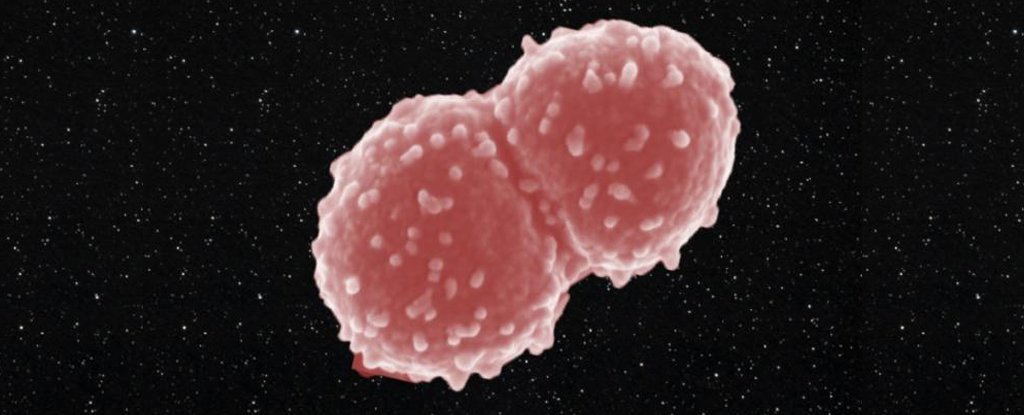Life on Earth is possible with the ideal and optimal conditions that support the existence of all forms of life on its surface. The atmosphere up and around, the humidity, the temperature and countless other biotic (like plants, animals, microorganisms) and abiotic factors (air, water, soil, energy, forces) contribute to the proliferation of life forms from the microscopic level to the organisms of most giant magnitude on Earth.
Life in space requires superhuman chemistry to survive from the dangers of extreme radiation exposures, oxygen-less atmosphere and devastating sunburns. One can barely survive in this environment unless it is an extremophile (capable of surviving extreme environmental conditions) like the Deinococcus radiodurans bacterium.
EXTREMOPHILES IN SPACE
Microbiologists have spent decades studying extremophiles, the organisms that can withstand extreme limits of survival, to find out the origin of life on Earth. Some extremophiles can live unprotected in space for several days; others can endure for years, but only by carving out a home inside rocks.
Now, new findings published in Frontiers in Microbiology, based on that experiment on the International Space Station, show that the bacteria Deinococcus radiodurans can survive at least three years in space. Akihiko Yamagishi, a microbiologist at Tokyo University of Pharmacy and Life Sciences who led the study, says the results also suggest that microbial life could travel between planets unprotected by rock.

BIOLOGY OF EXTREMOPHILE TETRAD*
Deinococcus radiodurans is an extremophilic bacterium and one of the most radiation-resistant organisms known. It can survive cold, dehydration, vacuum, and acid, and therefore is known as a polyextremophile.
Lab studies have found that Deinococcus radiodurans is capable of withstanding an acute dose of 5,000 grays (Gy)**, or 500,000 rad, of ionizing radiation with almost no loss of viability, and an acute dose of 15,000 Gy with 37% viability.
Let’s compare for a better understanding that the dose of 5,000 Gy is estimated to introduce several hundred double-strand breaks (DSBs) into the organism’s DNA. For comparison, a chest X-ray or Apollo mission involves about 1 mGy, 5 Gy can kill a human, 200–800 Gy will kill E. coli, and more than 4,000 Gy will kill the radiation-resistant tardigrade (segmented micro-animal ).
REFLECTING RADIATIONS
D. radiodurans, are normally resistant to damage from radiation. Their genes code for unique proteins that repair DNA. While human cells carry about two copies of DNA, and most bacterial cells carry one, D. radiodurans contain up to 10 redundant copies. Having more copies of essential genes means the cells can synthesize more copies of proteins that fix DNA damaged by radiation. This inherent defence mechanism, combined with protective outer layers of cells, kept the microbes alive despite radiation levels over 200 times higher than those on Earth.
THE LIST IS GETTING LONGER!
However, Deinococcus radiodurans is not the only microbe known to survive in space. The list is getting lengthier day by day. There are over 250 species known now to thrive in outer space, including Aeromonas proteolytica, Bacillus subtilis, Bacillus thuringiensis, Chroococcidiopsis, Deinococcus Aerius, Deinococcus geothermalis, Escherichia coli, Micrococcus luteus, Pseudomonas aeruginosa6 and so on.
REFERENCES:
- https://www.smithsonianmag.com/science-nature/scientists-discover-exposed-bacteria-can-survive-space-years 180975660/#:~:text=radiodurans%20isn%27t%20the%20only,with%20protection%20from%20toxic%20radiation
- https://en.wikipedia.org/wiki/Deinococcus_radiodurans
- Moseley BE, Mattingly A (1971). “Repair of irradiated transforming deoxyribonu- cleic acid in wild type and a radiation- sensitive mutant of Micrococcus radiodu- rans”. J. Bacteriol. 105 (3): 976–983. doi:10.1128/JB.105.3.976-983.1971. PMC 248526. PMID 4929286
- Murray RGE. 1992. “The family Deino- coccaceae”. In The Prokaryotes, ed. A Ballows, HG Truper, M Dworkin, W Harder, KH Schleifer 4:3732–3744. New York: Springer-Verlag
- ^ Ito H, Watanabe H, Takeshia M, Iizuka H (1983). “Isolation and identification of radiation-resistant cocci belonging to the genus Deinococcus from sewage sludges and animal feeds”. Agricultural and Biological Chemistry. 47 (6): 1239–1247. doi:10.1271/bbb1961.47.1239
- https://en.wikipedia.org/wiki/List_of_microorganisms_tested_in_outer_space
Also, read: Cryptic Viruses- Spreading the RNA repertoire

Muniba Usman is a high school teacher and teaching trainer by profession. She has a BS (HONS) in Microbiology and a diploma in Textile and Fashion design. She has a strong passion for research, arts, reading and writing. She has written many scientific articles and fiction stories for children.

